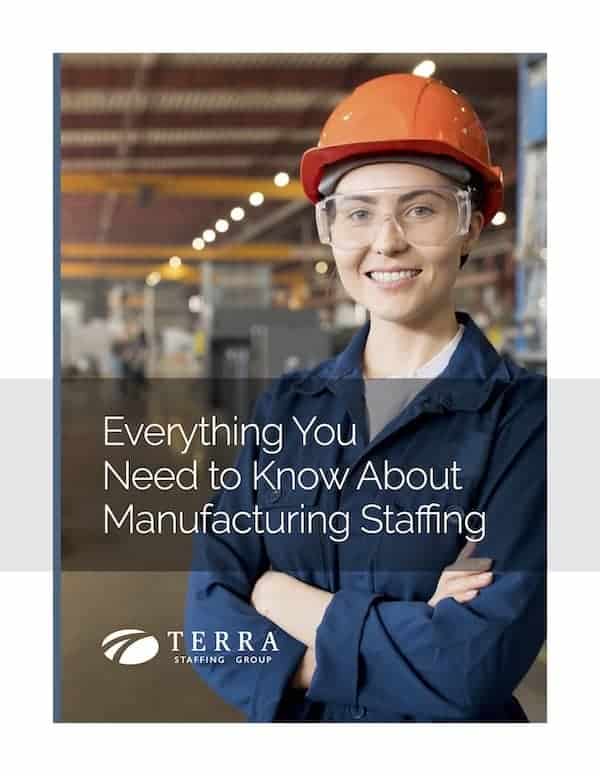How Supply Chains Are Recovering from COVID-19 Disruption and What It Means for Your Workforce
Posted on December 17, 2020
The COVID-19 pandemic has caused disruptions across all industries. From protecting the safety of workers to sending “nonessential” personnel home, very few employers were left operating as normal during the early days of COVID-19. Manufacturing has been hit particularly hard, with global supply chains facing immense strain and disruption. Supply chain disruptions can cause businesses and consumers alike to feel uncertain. They also highlight supply chain inefficiencies that are usually overlooked when things are operating normally.
In a study conducted by the Institute for Supply Management, almost 75% of the businesses surveyed had experienced supply chain disruptions as a result of the COVID-19 outbreak. In this same survey, 57% of respondents said they were facing longer lead times for orders with suppliers in China.
COVID-19 supply chain disruptions are remaining as the pandemic is ongoing, but they are not insurmountable.
What Causes Supply Chain Disruption?
Any inefficiencies can cause a supply chain disruption. Since supply chains are composed of large, interconnected processes, there are many steps that can fail or slowdown, leading to a disruption. When a major event occurs, like say the COVID-19 pandemic, it can cause issues at multiple levels of the supply chain.
When a root supplier in a chain, or suppliers of raw materials like plastic or metal that can be turned into a component that is then turned into a product, has a low yield or shipping issues, it can cause a ripple effect throughout the supply chain, leading to the disruption.
The Global Pandemic’s Effect on Supply Chains
In the case of the COVID-19 supply chain disruptions, China — largely considered the world’s largest manufacturing hub — went into complete disarray when the coronavirus hit. Over the course of months, regions shut down and production stalled. Companies whose supply chain is reliant on Tier 1 (direct) or Tier 2 (secondary) suppliers in China faced immediate production slowdowns in early 2020 that continue even as China gains a better hold of the virus.
Then, after the shocks to the supply chain, so-called “demand shocks” made landfall in Europe and North America, where consumers were purchasing far more than typically as a reaction to lockdowns and other virus-prevention methods were enacted worldwide. This stressed already slowed-down supply chains, leading to a mismatch between supply and demand. John Church, chief supply chain officer for General Mills, the parent company for brands including Cheerios, Pillsbury, Betty Crocker, Progresso, Häagen-Dazs, and more, told Fast Company that they saw demand surges as high as 300%, with ongoing surges continuing at around 10-30%.
The COVID-19 pandemic also disrupted labor, with skilled and trained workers unwilling or unable to work both domestically and abroad. As suppliers rush to meet increased demand or cut costs related to labor, the skilled labor market tightens. Employers are also facing increased costs to keep employees safe at warehouses and manufacturing plants.
Download our eBook: Everything You Need to Know About Manufacturing Staffing
Discover the historical context, recent data, and best practices for staffing manufacturing jobs in America. Download our eBook, “Everything You Need to Know About Manufacturing Staffing” for data-driven strategies for staffing manufacturing jobs.
How Supply Chains Are Adapting After COVID-19
There are a number of steps that can be taken to reduce the impact felt from COVID-19. For example, John Church of General Mills said they reduced the number of SKUs they were manufacturing to focus on producing high volumes of a smaller number of products.
He told Fast Company, “We simplified our portfolio, and that allowed them to ramp up their production accordingly. For the first three months of the pandemic in the U.S., we made 10-15% more cases in our manufacturing plants than we would have pre-pandemic. Over time, we had to bring on extra capacity, because you don’t build supply chains to spin that way in the food business—it’s not like 30% more people will suddenly join the population.”
According to Deloitte, other ways to adapt to COVID-19 include:
- Enhance focus on workforce/labor planning
- Focus on Tier 1 supplier risk
- Illuminate the extended supply network
- Understand and activate alternate sources of supply
- Update inventory policy and planning parameters
- Enhance inbound materials visibility
- Prepare for plant closures
- Focus on production scheduling agility
- Evaluate alternative outbound logistics options and secure capacity
- Conduct global scenario planning
How to Anticipate Demand and Disruption
Without a crystal ball, it can be difficult to see major disruptions before they come, however risk analysis and having a contingency plan for supply chain disruptions can help. When creating an emergency plan, consider what steps you would need to take at different areas of disruption. If you are concerned about Tier 3 suppliers, consider diversifying your supply chain. If you’re worried about labor shortages, consider how you hire and train your workforce.
Demand, on the other hand, can be forecasted to some extent — though the panic buying of March 2020 was hard to foresee. Demand forecasting is a key part of lean manufacturing principles, and should be a part of your everyday operations already. Workforce forecasting can also help you predict your company’s workload so you can ensure you have the correct amount of staff to handle the amount of work you are expecting.
Connect with TERRA Staffing Group
While unemployment remains high (but dropping), according to the U.S. Bureau of Labor Statistics, about 3.6 million persons not in the labor force in October 2020 were prevented from looking for work due to the pandemic. Keeping well trained labor as a large part of your supply chain is key. If you’re struggling to find staff for your warehouse or manufacturing facility, find one our branches today.
Looking for more resources to weather the storm of uncertainty? Check out our webinar, “Reality Based Change Readiness: Ditching the Drama During Changing Times at Work.”
Categories: HR and Management Advice, Innovation & Change Management
Tags: supply chain, supply chain disruption






